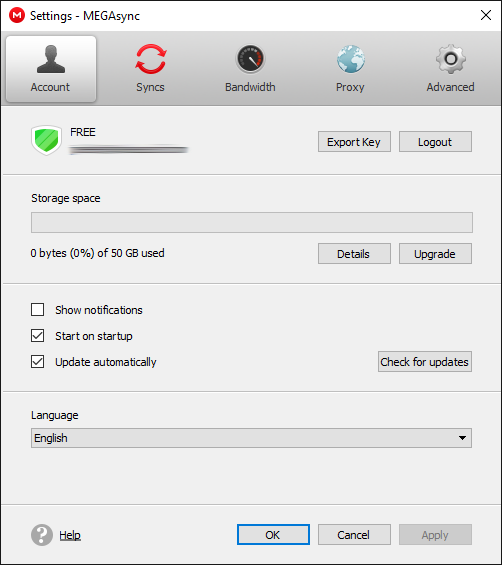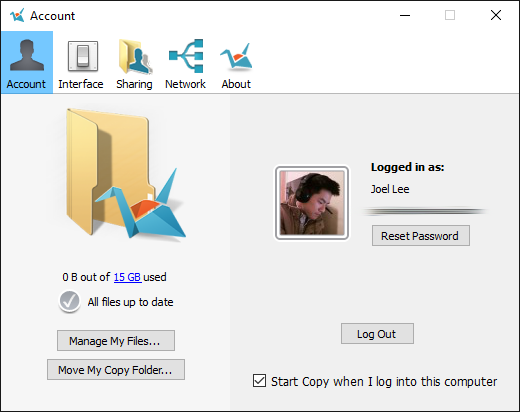

The importance of file backups cannot be overstated. If there’s one thing you can do to guarantee fewer headaches and frustrations over the course of the rest of your life, it’s making sure that you understand file backups and build good backup habits.
As far as backing up files on Windows, there are many ways to go about it, but our preferred first line of defense is to synchronize your files to a cloud storage service. Not only does this provide off-site copies in case your computer breaks down, but the syncing process means automatic backups that are always up-to-date.
These days, you have dozens of file backup services to choose from, and many of them have free plans that are more than enough for the average user. Which ones should you consider as a Windows user? Let’s take a look.
I’ve been using Dropbox since it debuted in 2007. That isn’t to say that I think it’s necessarily the best cloud storage service out there, but it has certainly been the most convenient for me. There’s a lot of truth to the idea that Dropbox “just works”.
Storage Space: The free plan comes with 2 GB of storage, but you can earn more space for free just by doing a few simple tasks. For example, each friend referral unlocks 500 MB, each connected social media account unlocks 125 MB, and using Mailbox unlocks an additional 1 GB. A free account could potentially have 20+ GB of space.
Key Features: Automatically syncs the designated Dropbox folder on your PC to all kinds of other devices, including smartphones, tablets, and laptops. All file types can be synced without issue. Files also have 30-day version histories, allowing you to revert to an older version at any time.
Paid Features: Dropbox Pro account upgrades are available for $10 per month. With an upgrade, you get 1 TB of storage space, the ability to set passwords and expiration dates for shared links, increased bandwidth limits for shared links, and the ability to remotely wipe data from synced devices.
Other Things to
All in all, Dropbox is still one of the best cloud storage options out there, whether you’re a free user or a paid user. Dropbox is also available in the Windows Store as an app for both PC and Mobile. OneDrive is Microsoft’s rebuttal to the success of Dropbox, and for a while it was actually one of the best options out there, but a recent decision to reduce storage limits for both free and paid users really killed the usefulness of OneDrive. It’s still usable, of course, but certainly crippled. Storage Space: As of now, free OneDrive accounts are limited to 5 GB of space. (It used to be 15 GB of space, along with some chances for expansion which no longer exist.) That might be enough for text files and documents, but you’ll feel cramped if you want to back up images and videos. Key Features: OneDrive offers automatic synchronization of all file types, but it’s particularly useful if you’re embedded in the Microsoft Office ecosystem as OneDrive integrates nicely with the entire suite of Office applications. Otherwise, it’s just a basic service that syncs with PCs, laptops, and mobile devices. Paid Features: For $2 per month, you can bump the storage space up to 50 GB, which isn’t too bad of a deal. Or you can get an Office 365 subscription for $10 per month and unlock 1 TB of space, which is on par with Dropbox. Other Things to
If the space limitations weren’t so strict, OneDrive would be pretty darn good. I love using it for my OneNote notebooks, and I’d even consider migrating completely to OneDrive, if its free storage space was comparable to what Dropbox offers. All things considered, Google Drive may just be the best cloud storage service available today, if you’re looking for a free solution. It may concern you that it’s operated by Google, but if you can get around that, you’ll love it. Storage Space: Right off the bat, Google starts you off with 15 GB for a free account — which is immediately better than both Dropbox and OneDrive. Do note, however, that this space is actually shared between Drive, Gmail, and Google+ Photos, which can be inconvenient, if you aren’t strict about Gmail and Photo management. Key Features: Drive keeps your files in sync across multiple devices, including PC, Mac, Android, and iOS devices. It also integrates seamlessly with Google Docs, which means you can view most files (e.g. documents, spreadsheets, and presentations) on Drive through Docs. Paid Features: If you need more space on Drive, Google offers the best value for a first-step upgrade: you get 100 GB for $2 per month. Beyond that, Google offers plans for 1 TB / 10 TB / 20 TB / 30 TB for $10 / $100 / $200 / $300 per month, respectively. Other Things to
Do you remember MegaUpload? The popular file-hosting service was taken down in 2012, along with the entire Mega network of sites, but re-launched in 2013 as a cloud storage service called MEGA. As it turns out, this service is surprisingly good. Storage Space: Free accounts start with a whopping 50 GB of storage space. There’s no doubt about it — if the only thing you need from a cloud storage host is space, then MEGA wins by a landslide. No other reputable service offers this much for free. Key Features: MEGA offers mobile apps (including Windows Phone) and a desktop sync client that keeps your files synchronized across devices. Everything is end-to-end encrypted with AES encryption, and files can be publicly shared and viewed (or in the case of video, streamed). Paid Features: As if their free offering wasn’t impressive enough, MEGA offers the largest paid limits for consumer-level cloud hosting: for 5€ / 10€ / 20€ / 30€ per month, you can get 200 GB / 500 GB / 2 TB / 4 TB of storage space. Other Things to
Be aware that Kim Dotcom stepped down as Director of MEGA back in 2013, so MEGA doesn’t necessarily share Dotcom’s zeal for privacy and security. Dotcom even publicly stated that he doesn’t think data on MEGA is safe anymore, though MEGA obviously rebutted the claim. Copy is a cloud storage service from Barracuda Networks, a company that specializes in security and networking solutions. Their business-class cloud storage service, CudaDrive, is really good — and Copy, the consumer-class alternative, is surprisingly good, too. Storage Space: Free users start with 15 GB of storage space, which rivals the amount of space offered by Google Drive. Unlike Google Drive, however, Copy’s storage space isn’t shared with email and photos, so you won’t have to worry about that in the back of your mind. Key Features: Like Dropbox, Copy offers 30-day revision histories and 30-day recovery periods for all stored files. Sync clients are available for PC, Mac, Linux, as well as Android, iOS, and Windows Phone. It’s simple, but effective. Paid Features: Copy offers two types of paid accounts. For $5 per month, you get 250 GB of storage space, and for $10 per month, you get 1 TB of storage space. Compared to the other services mentioned above, it’s certainly competitive. Other Things to
If you’re looking for a free way to keep your files synchronized to the cloud as a way to keep off-site backups, then the honest truth is that any of these services will work absolutely fine. The only reason to look one over is if there’s a particular aspect that you don’t like about it. That being said, the file revision history feature in Dropbox and Copy can be really useful, which is one reason why I’m sticking with Dropbox. Then again, OneDrive and Google Drive are both good choices if you’re already embedded into their ecosystems. Which cloud storage service do you use for file backups? Or do you not use any? Tell us about your process — and any thoughts you might have — in the comments below!2. OneDrive
3. Google Drive
4. MEGA

5. Copy

Which Sync Service Is for You?




 How to get Destiny Blink of an Eye Trophy / Achievement for PS4 Xbox One
How to get Destiny Blink of an Eye Trophy / Achievement for PS4 Xbox One The Wolf Among Us Wiki: Everything you need to know about the game .
The Wolf Among Us Wiki: Everything you need to know about the game . FIFA 13 Tricks Guide
FIFA 13 Tricks Guide How to Fix Assassin's Creed: Unity SLI Flickering Issue
How to Fix Assassin's Creed: Unity SLI Flickering Issue How to fix Xbox One Black Screen of Death (BSOD)
How to fix Xbox One Black Screen of Death (BSOD)